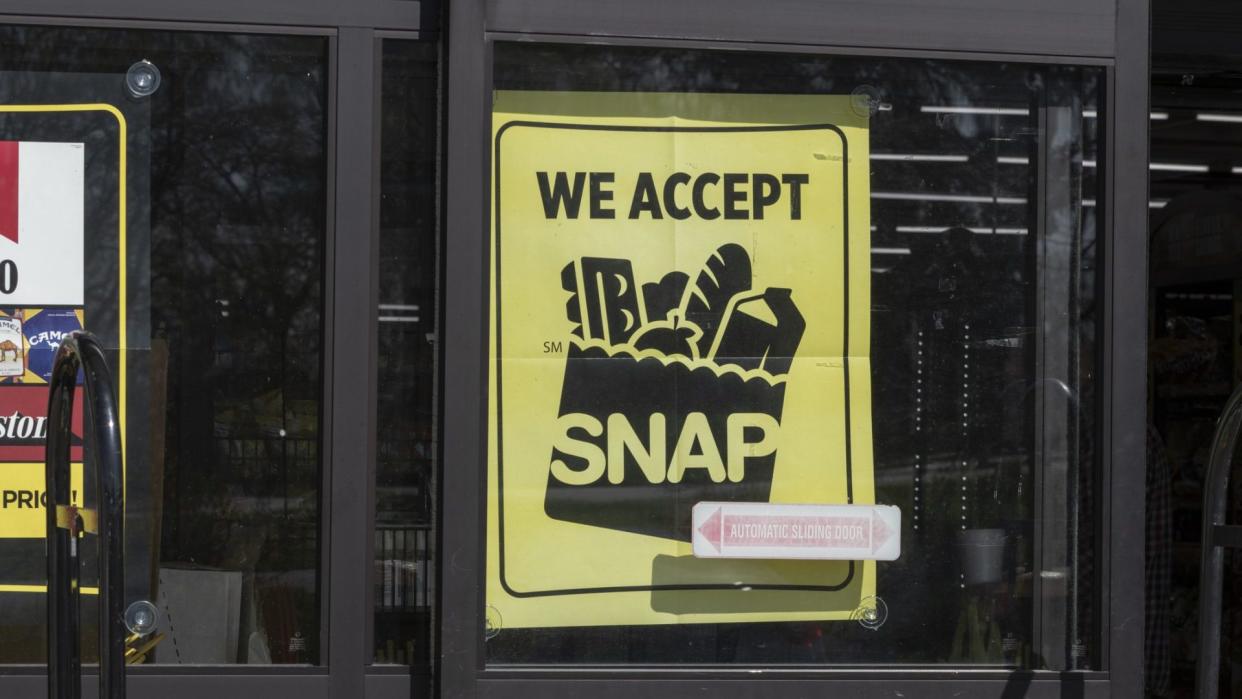Food Stamps: Expert Debunks 4 Myths

If you’re like many people, your pantry is probably stocked with food — some of which you’ll never actually eat — but everyone isn’t so fortunate. Often referred to as food stamps, the Supplemental Nutrition Assistance Program, the largest federal assistance program, provides benefits to those who need it.
SNAP Benefits: How Long Do They Last?
More Financial Aid: 23 Million California Residents to Receive up to $1,050 in Inflation Relief Funds
As of 2020, the average U.S. household spent $4,942 on food at home per year, according to the Bureau of Labor Statistics. This can make it very difficult for low-income households to keep food on the table.
For example, the federal minimum wage for covered nonexempt employees is just $7.25 per hour — i.e., $290 per 40-hour work week or $15,080 annually. Additionally, the average Social Security benefit is $1,539.68 per month — just $18,476.16 per year.
SNAP benefits vary by state and household size, but the U.S. average in fiscal year 2021 was $218 per month per person, according to the Kaiser Family Foundation. However, the average benefit was boosted by $36.24 as of Oct. 1, 2021.
Live Updates: Financial Trends, Money News and More
Clearly, SNAP benefits are crucial for many people; but, unfortunately, there’s a stigma attached to the program. Dr. Edward Hernandez, faculty member in Walden University’s Master of Social Work program, doesn’t believe this should be the case.
“In a prosperous nation, no one should be without food,” he said. “Access to food is a basic human right.”
He said SNAP is important because it allows millions of people to purchase additional food they desperately need to stay healthy.
“The extent of assistance is directly based on household income,” he said. “There are many working families that receive SNAP assistance to help with nutritional needs.”
Despite the potentially life-saving benefits offered by SNAP, there are many misconceptions about the program that simply aren’t true. Here’s a look at four long-standing myths debunked by Hernandez.
Myth: SNAP Is a Drain on Taxpayers
There’s a common misconception that food stamps place a financial burden on taxpayers, but Hernandez said that simply isn’t true.
“Research (from Moody’s Analytics researchers) has shown that for every $1 spent on SNAP assistance, around $1.73 is generated in economic activity,” he said. “The additional monies put into the system keeps food suppliers viable, provides jobs in food production, supports businesses and keeps people healthy.”
Myth: SNAP Benefits Are Only for Families
If you’re an individual in need of food stamps, you might not think you’re eligible, but Hernandez said that couldn’t be further from the truth.
“About two-thirds of SNAP recipients are children, seniors and people with disabilities,” he said. “Seniors with fixed incomes are financially stressed due to rising costs and limited resources.”
No matter what your situation, it’s important to secure these benefits if you need them.
“SNAP can be the difference between eating healthier and struggling to find proper food,” he said. “Children are our future, and one of the keys to their success is adequate nutrition.”
However, it is worth noting that many adults in the 18-50 age group are limited to three months of SNAP benefits every three years, unless they are working or in a work training program for 20 hours per week. Of course, some exemptions do apply.
Myth: You Can’t Apply for SNAP Benefits Discreetly
If you need food stamps, you might be hesitant to apply for benefits, because you don’t want others to judge you.
“The perceived stigma of having to go to the local ‘welfare’ office to receive SNAP has stopped many eligible people from applying,” Hernandez said. “However, the application process is now available online, and verification and eligibility can be done just over the phone.”
He said the discretion continues when using the benefits.
“Additionally, recipients are provided with EBT cards that can be used as credit cards, avoiding related stigma in a grocery store,” he said. “These cards can also be replenished at an ATM, and there are photo cards to help avoid fraud.”
Myth: People Use SNAP for Luxury Items and Fancy Meals
There’s a common misconception that people take advantage of the system by using food stamps for extravagance. However, Hernandez said this isn’t the case, because SNAP benefits can be used only to purchase eligible items.
“For example, prepared meals and restaurant dining are not permitted,” he said. “While you can buy an expensive steak with SNAP, most people spend their benefits wisely.”
He said plenty of items you might think would be eligible for SNAP benefits are not.
“Notably, items such as soap, detergent, toilet paper, paper towels, toothpaste, deodorant and other personal care items are not eligible to be purchased by SNAP benefits, even though they are costly and essential,” he said. “We can’t judge a system that is helping millions with basic needs by a few who don’t use it efficiently.”
More From GOBankingRates
This article originally appeared on GOBankingRates.com: Food Stamps: Expert Debunks 4 Myths
